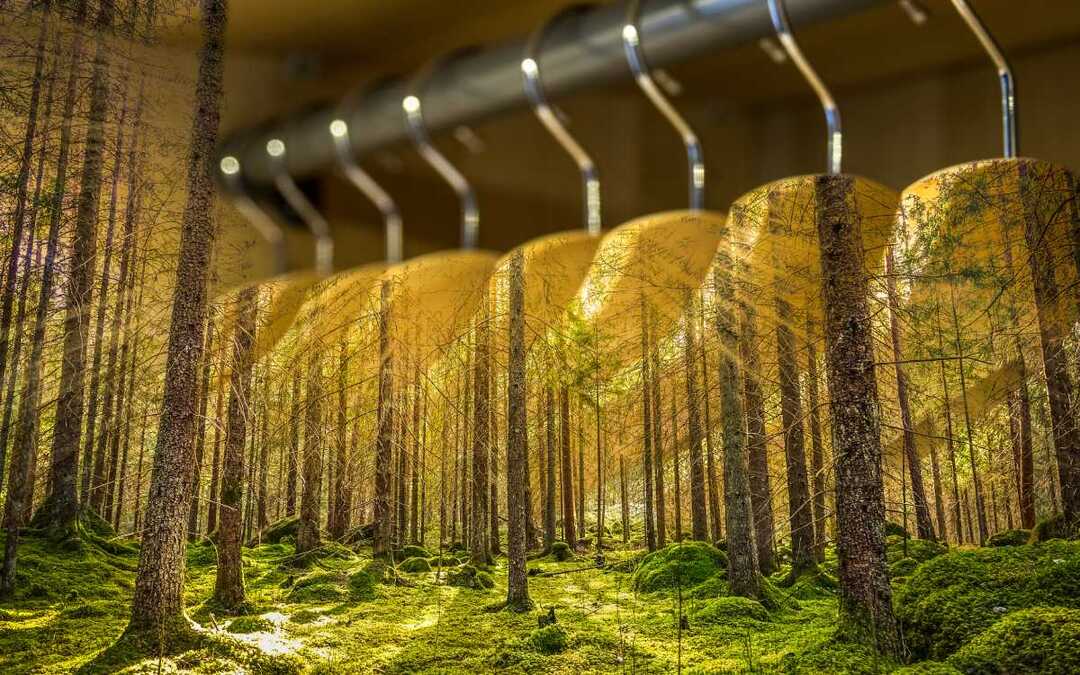Published:

The global fashion sector, mainly the apparel and footwear industry, produced more greenhouse gases than France, Germany, and the UK combined in 2018, around 2.1 billion tonnes of CO2 emissions – approximately four percent of total global emissions, according to research by Mckinsey.
Additionally, the fashion industry is responsible for 10 percent of annual global carbon emissions, more than all international flights and maritime shipping combined. At this pace, the fashion industry's greenhouse gas emissions will surge more than 50 percent by 2030.
Shedding further perspectives on the numbers generated, a United Nations Environment Programme (UNEP) report states that it takes about 3,781 liters of water to produce a pair of jeans, from the cotton production to the delivery of the final product to the store. That equates to the emission of around 33.4 kilograms of carbon equivalent. Every year half a million tons of plastic microfibers are thrown into the ocean, the equivalent of 50 billion plastic bottles. These microfibers cannot be extracted from the water and can spread throughout the food chain.
Most of the fashion industry operates at a fast pace, which is often referred to as fast fashion. Not surprisingly, some of the biggest fashion brands that we see in our local malls are all part of the fast fashion trend, which means there is urgency throughout the value chain – from design to production to shipping and display. Collection launches are hardly seasonal anymore, there is an urgent frequency in replacement of clothing inventories.
According to research by the Ellen MacArthur Foundation, in 2000, 50 billion new garments were made, and the figure doubled. The fast manufacturing and selling pace has in turn speeded by consumption, resulting in apparels being discarded faster. Something that was in fashion a few months ago may not be fashionable a few months down the line, making consumers purchase at a faster rate.
In fact, research shows that less than 1 percent of second-hand clothing is recycled or upcycled, which points towards these clothing pieces ending up in landfills. Awareness around sustainability in fashion is now spreading rapidly and making is a choice-driven trend. Sustainable fashion creates a circular business model with a positive impact on the environment, encourages recycling, reusing, and repurposing, and promotes a slow fashion lifestyle, less consumerism, and more conscious purchasing.
Looking at fashion sustainability closer home in the UAE, there are a few second-hand luxury and thrift stores such as thrift for good, Retold, Bagatelle Boutique, Garderobe and The Luxury Closet among others. Additionally a Dubai-based SME, DGrade has developed GreenSpun which is a high-quality yarn made from recycled plastic water bottles. These measures in the UAE support sustainable and slow fashion and are benchmark in building a more environmentally conscious fashion industry in the country.
The journey across the lifecycle of a fashion product – design, material, manufacturing or fabric processing and treatment, packaging, supply chain, and retail are all under the sustainability scanner.
For example, design innovation such as 3D sampling can save brands from the labour-intensive process of developing, altering samples for a larger production. Using virtual 3D samples instead of producing them not only reduces production costs but also lowers the carbon footprint and accelerates the entire process.
Additionally, jewellery plays a large role in non-sustainable production methods that the fashion industry undertakes. This is especially true about precious stones. For instance, lab-grown diamonds produced using advanced technologies such as chemical vapour deposition or the high-pressure, high-temperature method imitate the natural diamond growth process. Thereby avoiding unsustainable practices associated with traditional diamond mining such as water pollution, land disruption, and unethical labour exploitation.
Another sustainable production method for fabrics is using plant-based dyes that are an alternative to chemical and lead-petroleum based products. With extraction innovation, the textile industry can extract colouring pigments from plants and, which is environmentally friendly.
Virtual Reality (VR) can is another way to strengthen sustainability in fashion, it can support the consumers by providing visual representation of themselves wearing the apparel thereby reducing the pressure on physical stores and slowing down the fast-fashion trend. Transparency and traceability are also key aspects of building a sustainable fashion industry.
Advancements such as blockchain technology can impressively contrinbute towards making the industry more open and visible, it could record and make available supply chain information, proving the genuineness of products. Above all of this is the packaging factor, most global fashion labels use plastic as a means of packaging however sustainable alternatives made of compostable polymers are currently available. They are made from renewable resources and reduce carbon footprint and waste production.
Underpinning the above the need for the fashion industry including academia to come together to address the need for sustainability in fashion and the multiple innovative solutions and practices that can be adopted. At Heriot-Watt University Dubai the B.A (Hons) Fashion Branding and Promotion degree is designed to meet the fashion industry's need for professionals who have a full understanding of the commercial aspects of the sector as well as creative design skills that will support and develop a sustainable mindset towards the indsutry while also focusing on profits.